Review: LG G3 for Verizon Wireless
Jul 21, 2014, 4:00 PM by Eric M. Zeman
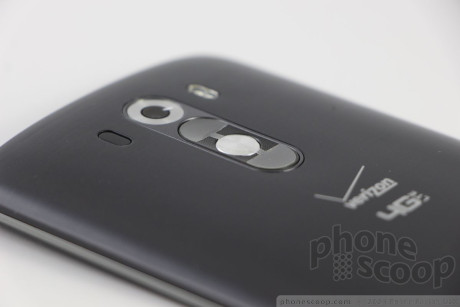
The LG G3 is one of the company's finest efforts and a strong competitor against the likes of Samsung's Galaxy S5 and HTC's One (M8). LG's flagship Android phone makes significant strides in design, quality, and features. Here is Phone Scoop's full report.
Form
Is It Your Type?
The G3 is for Mr. Jones. It's not the phone you buy if you want to follow trends, it's the phone you buy if you want to set trends. The G3 is the first real smartphone to include a quad HD display. It represents the pinnacle of modern smartphone evolution and design. If you want the creme de la creme, the G3 fits the bill.
Body
The LG G3 is the company's flagship device for 2014. It is significantly bigger than last year's phone and is closer in size to the Samsung Galaxy Note 3 than it is to the G2. The G3 carries over the design ideas first set forth with the G2 but increases their appeal dramatically with updated materials and improved build quality.
The G3 is one of the finer phones LG has made. The difference in quality between the G2 and G3 is marked. Where last year's phone looked good but felt cheap, this year's phone both looks good and feels good. It's still made of plastic, but the plastics are stepped up and so is the design. It has crisp, clean lines that, while conservative, are appealing. The front is mostly black, with the exception of a gray band at the bottom. This same gray forms a thin accent that encircles the outer edge. Lots of modern phones use this design idea, but it helps give the G3 a much-needed boost in class. The back is a dark gray color that's brushed in such a way that it mimics metal. The back cover is not metal, but LG describes the paint job as "metallic." Take that for what it's worth.
Don't for one second think that the G3 is a one-handed device. You'll need two hands to use this phone. It is quite large and there's no stylus in sight. I can't wrap my hand around it. Since there are no buttons along the outer edge, LG tapered the sides in order to help the phone fit at least a little bit better in the hand. Despite the height and width, the G3 is fairly thin (for this class of device) at 9.4mm. It's light enough that I didn't mind using it or carrying it around. It fits into some pockets, but not all. If you're rocking skinny jeans, chances are it won't fit in the front pockets without protruding garishly.
The gorgeous screen consumes the bulk of the front surface. A thin strip of bezel above the display holds the earpiece speaker, user-facing camera, and several sensors. The sensors are all but invisible. The bezels along the sides of the screen are impressively thin. The gray band at the bottom is thicker, but it holds no buttons. The G3 relies on on-screen controls for the Android operating system.
As mentioned, there are no buttons along the side edges. That's because, like the G2, LG has relocated them to the back surface. I had a hard time getting used to this button configuration even after using the phone for a week, but I can say the buttons themselves are much improved over last year's phone. The entire button/camera assembly has been redesigned. It's flatter, more attractive, and feels stronger and of higher quality. The screen lock button is in the middle of the three-button array, with the volume above and below. The screen lock button is raised just slightly, while the volume toggles are dimples that dip below the surface of the phone. I had no trouble discerning between the three without looking. Travel and feedback of all three buttons is great. LG really did make the buttons better to use. It's still too easy to accidentally smudge the camera lens while your finger searches for those buttons.
The microUSB port is on the bottom of the phone, as is the stereo headphone jack. There's an infrared beamer on the top of the phone. There's no camera button.
The G3's rear cover peels off with ease thanks to a nice notch for your thumbnail. Under it, you'll find the removable battery and ports for the SIM card and the memory card. You have to take out the battery in order to remove the SIM card, but the memory card can be hot-swapped if you want. The G3 supports wireless charging, but requires a separate rear cover.
The LG G3 is an attractive, powerful, well-made piece of hardware. It doesn't rival Apple nor HTC's use of metals, but it closes the gap significantly.
Performance
Screen
LG went for broke with the G3's screen. Not only does it measure a pocket-busting 5.5 inches, it ups the ante with 2560 x 1440 pixels (or quad HD) resolution. LG decided to stick with LCD technology for the display, and words come woefully short in describing how incredible it is. The sheer volume of pixels makes every single on-screen element razor sharp and clean. Individual pixels are invisible. Viewing angles are outstanding, there's no color shift or brightness drop-off when the phone is tilted side-to-side. Colors are very good. I found the G3 worked fairly well when outdoors under a full sun, but you need to set the brightness all the way up. When the brightness is cranked and the screen is free of smudge, it's no trouble to use the G3 as a camera at your summer picnic.
Signal
The Verizon variant of the G3 gave me absolutely no trouble accessing the cellular network. The phone held onto LTE 4G throughout the review period and never dropped down to 3G (thank goodness!) I was able to make phone calls in poor coverage areas with ease. The G3 did not drop any calls while I used it. I found LTE speeds to be quite quick, with peak downloads surpassing 20 Mbps and averages hovering around 10 Mbps. The G3 was apt at uploading and downloading files to social networks, and delivering web sites in a blink. In short, the G3 performs in line with other Verizon devices.
Sound
Calls I made through the G3 sounded good, but were just shy of great. The earpiece produces loud calls, though not the clearest I've heard. Calls were easy to hear in a variety of environments; I had no trouble maintaining conversations in noisy coffee shops my local mall, nor during a professional soccer match. Call quality did degrade from time to time, however, enough to get in the way of comprehension. The speakerphone also produces plenty of volume to overcome noisy spaces, but quality degrades a bit. There's more interference than via the earpiece. Those with whom I spoke through the G3 said I sounded really good. Alerts and ringers are exceptionally loud, and the vibrate alert is quite strong.
By way of comparison, I tested an international variant of the G3 on both AT&T and T-Mobile's networks and calls were much clearer.
Battery
In a word, epic. I had a hard time killing off the G3's 3,000 mAh battery, despite the large, pixel-rich screen and my own intense use. For this, we can probably thank the Qualcomm Snapdragon 801 processor, which made big strides earlier this year with respect to power management. The G3 was able to handle hours of calls, tons of social networking, lots of web surfing, picture taking, and video watching. Keep in mind, all these tests were run over Verizon's LTE network, so there's no need to worry about 4G killing off your battery. The G3 is a solid performer.
Like other competing flagships, the G3 includes a battery saver tool that shuts down predetermined apps/services once the battery reaches a preset level. For example, it can turn off Bluetooth and Wi-Fi when it reaches 30%, or turn off background sync and alter screen brightness when it reaches 20%. In other words, if you happen to run into battery trouble and know it'll be a while before you can charge, battery saver will help maximize the remaining up time.
Basics
Menus
The LG G3 runs Android 4.4 KitKat and a brand new version of LG's user interface. Like Samsung and HTC did earlier this year, LG is responding to changes in the competitive landscape to modernize the look and feel of its Android skin. As far as I am concerned, it is much cleaner and more attractive than previous generations. To some eyes, it may more closely resemble Samsung's TouchWiz than it used to, and I'd agree. The entire UI is flatter, the fonts are thinner, and LG has employed more circles throughout the design.
LG has long offered flexible home screen and menu arrangements and the G3 is no exception.
The lock screen can be configured to show a number of different pieces of information if you so wish. It can reveal the clock, clock/weather, as well as shortcuts to select apps, such as the phone, messaging, browser, and camera. The G3 comes with both KnockOn and Knock Code. These tools were created out of necessity. Since the home button is on the back of the phone, there was no way to wake the device without picking it up. With KnockOn, you tap the screen twice to show the lock screen. With Knock Code, you set a unique, tapping pattern to unlock the device. Both tools have been around for a while now and work really well. Only the camera can be opened from the lock screen without entering a password, if one is enabled.
The G3 includes five active home screen panels out of the box, but one is reserved for LG-based content, such as the LG Health app. LG calls this Smart Bulletin, but it can be disabled if you want. The remaining home screens can be customized at will, as per normal for Android smartphones.
I've always liked LG's app menu screens. Users can select large or small icons, which either make them easier to see or cram more on to a single panel. Apps can be viewed alphabetically, by date, or in a custom order, but not in a list. Several tools make it a breeze to hide apps from the menu screen or uninstall them altogether.
The notification tray is one area where LG borrowed some inspiration. The new circular icons are pretty and remind me of those in iOS7 and the latest rendition of TouchWiz. The tray offers several toggles for wireless radios and the QMemo tool common to LG handsets. The toggles can be customized, rearranged, and so on. The tray also includes sliders to adjust screen brightness and system volume. These controls leave only about half the screen below them for viewing actual notifications.
In terms of customization, LG and the G3 offer a lot. Users can adjust fonts and font size, wallpapers and themes, swap between Easy mode and standard mode, pick from myriad animations, customize home touch button arrangement, as well as optimize select apps for easier one-handed use. Last, and perhaps most importantly, the volume toggles can be designated as shortcuts for when the phone is locked. For example, a long press of the bottom volume key opens the camera, bypassing the lock screen entirely. Users can select which apps these two buttons open.
The settings tools are rather rote. By default, they are configured in the four-tab setup that I dislike. You can select to view them on a single page, however, which I prefer. The number of settings is lengthy, but LG has done away with some of the hokey 3D buttons are replaced them with modern on/off toggles and check boxes that I find more appealing.
The G3 supports multi-window apps, which means you can run two apps side-by-side at the same time. It is off by default; you have to turn it on the system settings to get it working. It's really easy to use and the G3's larger screen and high pixel count mean you can see more content in each of the two apps. For example, I was able to surf the web and read web sites - without resizing them - in one window, while I had YouTube videos playing in the other window.
Thanks to the 2.5 GHz quad-core Snapdragon 801 processor, the G3 didn't blink when it came time to perform. Everything about the interface and OS was smooth as silk when transitioning between screens and apps. Keep in mind, the huge number of pixels could be a burden to the processor. Even so, the 801 didn't seem fazed at all. It's one fast phone.
Calls and Contacts
LG reskinned the phone app, but the underlying mechanics will be familiar to most seasoned smartphone users. The basic view is that of a dial-pad with tabs running across the top providing access to call history, contacts, favorites and groups. There are also dedicated buttons along the bottom of the dialpad to initiate voice commands or text messages after you type in a number (rather than make a standard voice call.)
The G3 includes LG's most advanced calling features, such as noise suppression, call recording, HD Voice, and gestures that will answer calls when the phone is lifted to your ear or silence calls when the phone is flipped over. I found all these features to work as they should.
The redesigned contact app is gorgeous. It functions just the same as the stock contact app does, but LG's new skin gives it a modern, clean look that I really, really like. The main contact screen places dialer and messaging shortcuts right in the main screen, which eliminates at least one tap if you want to call someone or message them. It's easy to manage groups, and the contact app has several useful home-screen widgets, too.
Messages
First, a word on the keyboard. It has one of the coolest features I've seen: Users can adjust the size to better suit their thumbs. If you place a priority on speed, feel free to shrink it down so the letters are smaller and closer together. If you have fat thumbs and prefer accuracy, increase the size so the letters are larger and further apart. The tool for adjusting the size is dead simple to use. The keyboard includes a fifth row for numbers, which users can choose to turn on/off, and configurable action keys along the bottom row. Last, the keyboard comes with several different themes, and split-screen mode for landscape typing. Well done, LG.
The G3 adopts the same tack used by other Verizon phones, including the HTC One and Samsung Galaxy S5. Verizon Messaging is set as the default messaging application and it handles SMS/MMS. Verizon Messaging offers access to some neat extras. For example, it includes its own set of animated emoticons. The app can be used to create a postcard, as well as to record a voice message or send a Glympse. Glympse is a location-sharing tool. I was able to send my location data to other phones quite simply. The app lets you control how long the location details are visible to the other person. The shortest period of time is 15 minutes and it stretches up to two hours. You can follow the person live on a map, as well as map directions between the sender and recipient.
Beyond these tools, the functionality of Verizon Messaging is OK, but I find it lacks polish. It also lacks templates with pre-composed messages. Since Google allows Android device owners pick which app they want to use for SMS, you can ditch the Verizon app if you want, and use the old Android SMS app or Google+ Hangouts.
Aside from Google+, no other social networks are installed. You'll have to snag Facebook, Twitter, and others from the Google Play Store. The G3 does have the standard Gmail and email applications, both of which function well.
The phone also has a dedicated app for receiving emergency alerts.
Extras
Media
The G3 offers a variety of media apps and services. The Google Play Store is available for purchasing content, and the individual Play apps are loaded, as well. These apps haven't changed much over the last two years. The G3 also offers a basic music player for side-loaded music, and the stock YouTube application.
Verizon was sure to bundle in a ton of its preferred apps, as well. You'll find Amazon Music and Audible for MP3 and audio book consumption, respectively, as well as NFL Mobile and Slacker Radio.
The G3 does include LG's remote control app for your home theater gear. I found it easy to setup and use with my TV and cable box. I was flipping channels and surfing my content guide in no time.
There are multiple tools for sharing media between devices. First, there's NFC for easier pairing; just tap to share. LG's SmartShare Beam connects the G3 to other LG phones and tablets, but the phone also has a Media Server tool for connecting with devices via DLNA. The G3 also supports Miracast for connecting to TVs and LG PC Suite for connecting to PCs.
Camera
LG has really toned down its camera software, minimizing the app down to almost the bare minimum. As noted, it can be launched from the lock screen or with a long press of one of the volume toggles. There is no dedicated hardware camera button. The app launches swiftly.
At its most basic, the camera UI has but three buttons: one to access the settings, one to jump to the photo gallery, and one to exit the camera. In short, you can launch the camera and get to the shooting screen quickly. All you have to do to take a shot is press the screen.
If you want more, press the three little dots in the corner. The tools unfurl along the left edge of the screen and include access to the flash, front-facing camera, shooting mode, and settings. A visible shutter button for taking pictures/video doesn't appear until you press the three little dots, either.
Shooting modes have been reduced to four: Auto, Magic Focus, Panorama, and Dual Shot. Magic Focus lets users select what portion of the image they want to be in focus after the fact. It works best when there's a well-defined subject and background. Panorama is self-explanatory. The Dual Shot mode lets you shoot images with both the front and back cameras at the same time, so you can include your vain self in that shot of the Grand Canyon or Statue of Liberty.
The full settings have been drastically reduced. You can turn the framing grids on/off, turn LG's Cheese Shutter feature on/off (why does this still exist?), adjust the resolution of images, and cycle through the HDR modes. That's it. There's no white balance, no exposure, no color controls, nor many other controls that are often available to smartphone cameras.
I like the HDR tool best. There are three options: HDR On, HDR Off, and HDR Auto. HDR is an important tool for balancing out exposures, but it needs to be used carefully. Having an Auto option - which senses whether or not it's needed before taking the shot - is truly helpful. In my tests, it used HDR in appropriate settings.
LG made the G3's camera incredibly easy to use and still included just the right amount of tools for the creative photographer.
Pictures
The G3 can take pictures up to 13 megapixels. The highest setting shoots full frame (4:3) images. If you choose the “wide” 16:9 ratio, images will be cropped to 10 megapixels.
In general, I liked the images. They look staggering when viewed on the G3's luscious screen. The sensor handled really bright spots well, as evidenced by the visible details in the red flower below. Other cameras I've used recently, in comparison, lost those details entirely. Focus is mostly good, white balance is accurate, and exposures mostly spot on. I'd say quite comfortably the G3 can stand as your main camera when on vacation.
Video
The G3 can capture 4K video, but you don't need that unless you have a 4K (Ultra HD) TV. Stick with the 1080p HD video capture setting and you be plenty pleased with the results. I thought the video looked fantastic. The focus is razor sharp, exposure spot-on, and white balance perfect. I thought motion was sometimes a bit jittery when the G3 was being panned during filming. Otherwise, you can rest easy in knowing that the G3 can take nearly professional-quality video.
Gallery
LG installed both the standard Android gallery and the Google+ Photos app for managing your pictures.
The standard gallery has been skinned by LG with its newer interface aesthetics, but the underlying mechanics are about the same. It lets you view the gallery by album, date, or location and separates the local camera roll from other online galleries that might be visible. You can even see the photo galleries of nearby LG devices (as long as the owner of that device has made it public). I really like that the gallery lets you separate videos from pictures.
Whichever album you open, the images are arranged in a grid. You can perform pinch-to-zoom gestures to increase the size of the photos in the grid. Individual pictures can be moved and renamed, cropped and rotated, as well as adjusted for exposure, color, and so on. There are a number of built-in filters that adjust the tone and artistic appeal of photos. Sharing tools are a breeze to use, and let you easily send your photos to just about any online destination.
If you've taken any pictures with the Magic Focus setting, you have to use the Gallery app to choose what you want to be in focus before you can share them.
Apps
Verizon stacked the G3 with plenty of annoying apps. Some include Caller Name ID, Verizon Cloud, My Verizon Mobile, VZ Protect, and VZ Navigator. There's a full suite of Amazon-branded apps, such as the Amazon Appstore, Amazon Store, Kindle, and so on. Some LG-specific apps include an Update Center for managing system and app updates, a download manager, and a file manager. There's even a dedicated app for live support via text messages.
The G3 also supports LG's QMemo and QSlide apps. The QMemo feature takes a screenshot and then loads the image into a simple editor for marking up and sharing.
QSlide apps are miniature apps that can remain open and running on top of other apps in a little floating window. Some of them include the phone/contacts app, messaging app, browser, calculator, and several others. These features have been around on LG phones for a while and function perfectly on the G3.
Bluetooth
The G3 supports Bluetooth 4.0 and a wide range of profiles. I successfully paired the G3 with a half-dozen different devices. Phone calls routed to my car's hands-free system sounded very good and offered plenty of volume. The G3 includes the aptX stereo music profile, which makes for high-quality playback through other devices that support the same profile. I spent hours listening to the G3 through my favorite portable speaker when cleaning out my garage over the weekend and the sound was amazing.
Browser
The Verizon G3 includes only Google's Chrome browser. I like the way it syncs open tabs and bookmarks between other devices, and it does a fine job of rendering web sites. It performed very well over Verizon's LTE 4G network.
Clock
There are several clock options for the lock screen. You can leave the lock screen blank, place a single clock there, a dual clock, or a clock combined with a weather widget. Whichever you choose, the clock is easy to read anywhere… inside. I couldn't read the time at all outside, even with the screen brightness cranked. That's kind of annoying.
GPS
The review unit included Google Maps and Verizon's VZ Navigator for navigation. Both apps paired well with the G3's GPS radio, which was consistent at pinpointing me in fewer than 5 seconds and to within 15 feet. I like Google Maps because it is great for search, routing directions, and is free. VZ Navigator is also a solid option, but it carries a monthly fee.
Guest Mode
Guest Mode is meant to safely protect the owner's data and settings while lending the phone to someone else (read: a kid.) Guest mode lets people play games or listen to the media player, for example, but not access email, messaging, or settings. It's a cinch to set up and helps keep private info private. The mode can be accessed with a dedicated lock screen pattern (drawing a "G" on the screen.)
Smart Stay / Smart Video
The Smart Stay feature can be used to keep the G3's display on for as long as you're looking at it. It doesn't always work. For example, it is more or less useless if you're reading a Twitter update in the dark. There's a similar app called Smart Video that keeps the video player playing as long as the front-facing camera can see your face. It'll pause the video if you look away and resume when you look back. As on other phones, these features are gimmicky at best.
Wrap-Up
The G3 is an excellent effort from LG. It evolves from last year's flagship in exactly the right way by fixing the G2's problems while carving out its own identity.
The G3 is a classy, well-made phone that offers the best display currently available from a smartphone. The materials are better, the button design is cleaner, and everything about the phone functions well. Perhaps the only downside of the hardware is the large size, which sometimes requires two hands for proper use.
I was impressed by the G3's ability to work on Verizon's network, which includes decent call quality and speedy data performance over LTE. The battery is a behemoth.
LG's revised user interface skin is its best yet. It cuts down on the visual clutter and is simpler and cleaner throughout. LG made huge changes to the camera and they really pay off. The simplified user interface is a snap to use. Some may complain it lacks features, but I say it lacks clutter. It doesn't hurt that the 13-megapixel sensor produces great pictures and video.
The G3 represents LG at the top of its game. The Samsung Galaxy S5 and HTC One (M8) are compelling, but the G3 has plenty of its own appeal. If you're on the fence about which flagship to buy, I implore you to go to your local Verizon store and look at the G3's gorgeous screen before you make a decision.
Comments
Broken Screens
I am torn between a tried and true Samsung and the G3.
I ...
(continues)
Not bad.
Nice try LG. Hopefully you make something more durable next year 🙂.
If you buy this phone make sure you buy the best case you can or you'll be replacing it very soon.
(continues)


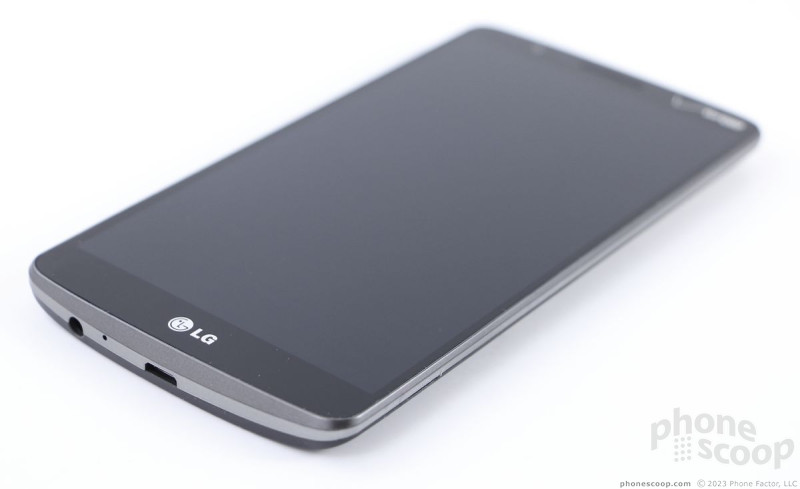



















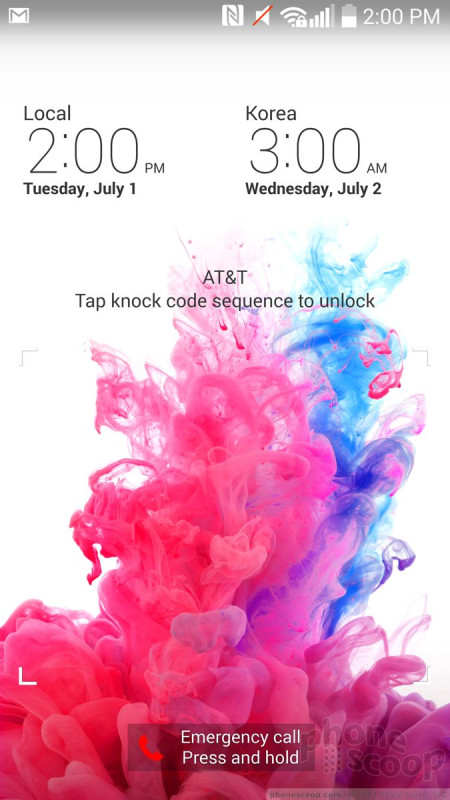













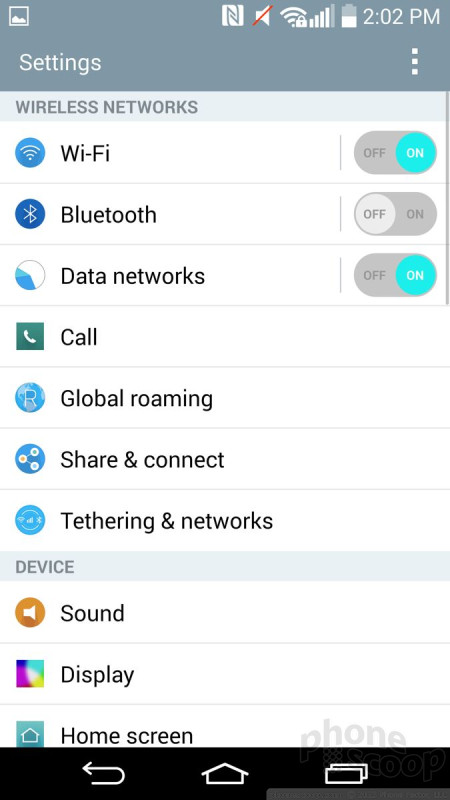







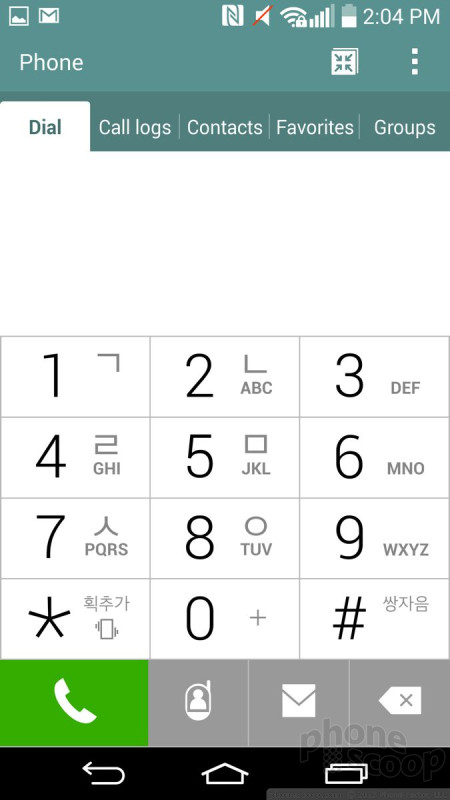







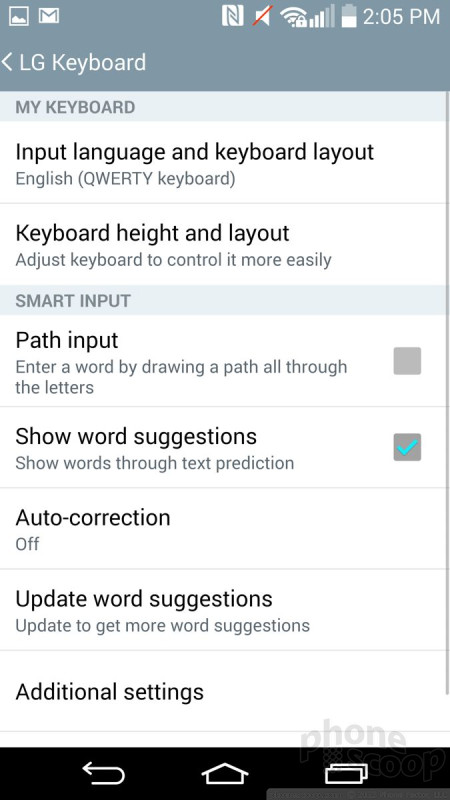












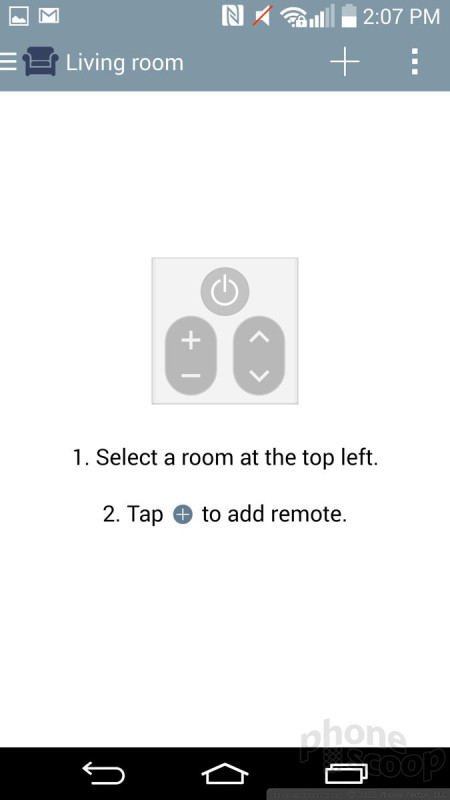





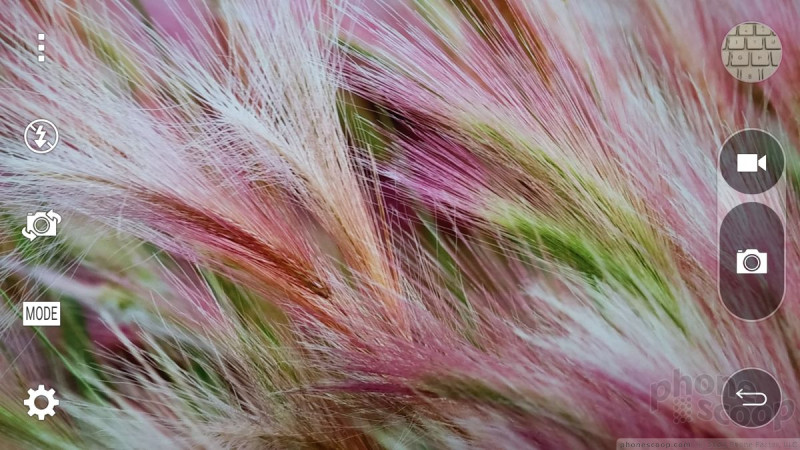




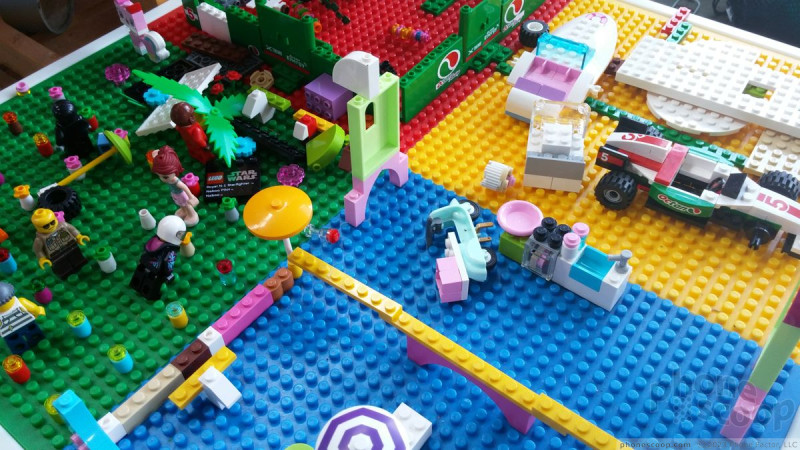




















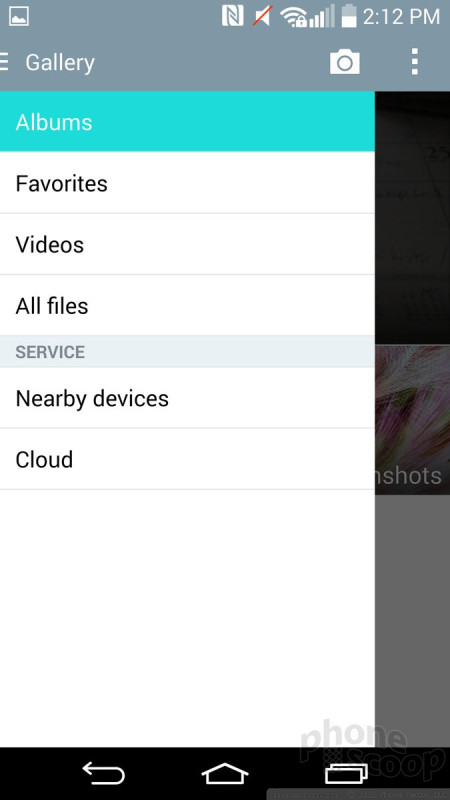






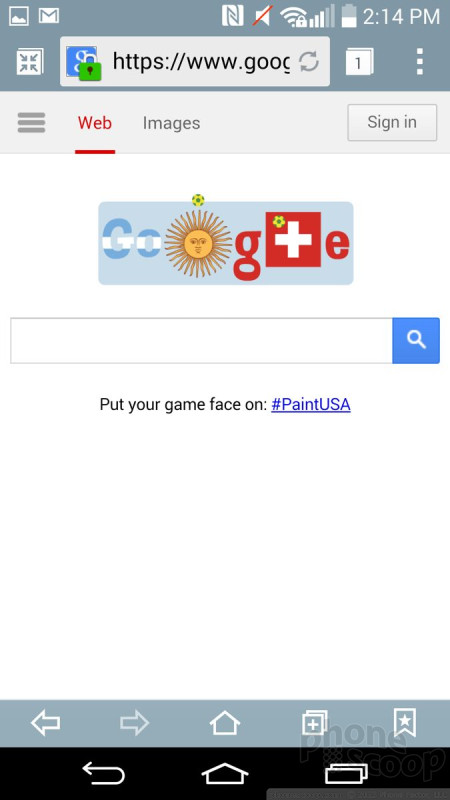




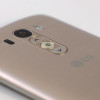 Review: LG G3 for Sprint
Review: LG G3 for Sprint
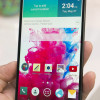 Hands-On: LG G3
Hands-On: LG G3
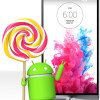 LG to Start Pushing Lollipop to the G3
LG to Start Pushing Lollipop to the G3
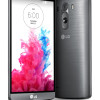 LG Shows Off the G3, with Quad HD Display, at Global Events
LG Shows Off the G3, with Quad HD Display, at Global Events
 LG G3 (CDMA)
LG G3 (CDMA)






